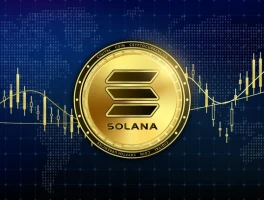Solana ETFs: Are We Witnessing a Genuine Shift, or Just Clever Marketing?
The ETF market is a blood sport, and the latest entrants are Solana ETFs. Bitwise, Grayscale, and others have jumped into the fray, offering investors exposure to Solana (and, in some cases, staking rewards) in a neat, exchange-traded package. The initial numbers are eye-catching. Bitwise's BSOL saw $46 million in trading volume on its third day. Eric Balchunas at Bloomberg called it the "best ETF launch of 2025 in any asset class." High praise, indeed. But let’s dissect this a bit before we crown any kings.
Balchunas calls these new ETFs "McDonald's easy" for investors. Low cost, easy access, perceived safety. The analogy is apt, but I find myself asking: Is it too easy? Are investors fully grasping what they're buying, or are they simply chasing the next shiny object? (Remember Dogecoin, anyone?) This isn't to say Solana is inherently bad, but the "McDonald's easy" pitch glosses over the inherent volatility of the crypto market.
Canary's Hedera ETF managed $2.3 million, and the Litecoin ETF scraped together $500,000. These numbers, while not insignificant, pale in comparison to BSOL’s performance. It seems Solana is the star of this particular show. But let's remember the context: The SEC only recently opened the door to crypto funds in January 2024, initially with Bitcoin ETFs. BlackRock's IBIT vacuumed up $70 billion faster than any ETF in history. Are these Solana ETFs riding the coattails of that initial wave of enthusiasm, or is there something genuinely different here? Crypto’s second wave of ETFs arrives, investors snap up new Solana offering - Fortune
The XRP Question and the Shutdown Shadow
Bloomberg is already speculating that XRP will be the next crypto ETF to launch, potentially after the government shutdown ends. This raises an interesting point: The launch of these Solana, Hedera, and Litecoin ETFs appears to coincide with new guidance issued by the SEC at the start of the ongoing federal government shutdown. Is this a coincidence, or is the shutdown creating a window of opportunity? (One could argue that reduced oversight leads to faster approvals.)

The quest for a crypto ETF stretches back to 2013, when the Winklevoss twins first tried to get a spot Bitcoin ETF approved. Grayscale even sued the SEC in 2022 and won, forcing the regulator to reconsider its stance on spot versus futures-based Bitcoin funds. This long and arduous journey suggests that the SEC's stance is evolving—or perhaps, just bending under pressure.
Bitwise CEO Hunter Horsley claims that BSOL "connected with a lot of investor demand." Of course, he would say that. It’s his job to promote his product. But what is "a lot"? Is it sustainable demand, or just pent-up demand from investors who missed the Bitcoin and Ethereum gravy trains? And more importantly, what happens when the market inevitably corrects? Will these "McDonald's easy" ETFs turn into "McRib" regrets? I've looked at hundreds of these filings, and the phrasing always seems designed to obscure as much as it reveals.
Is This Time Really Different?
The launch of Solana ETFs marks another step in the mainstreaming of cryptocurrency. But before we declare victory, let's remember the lessons of the past. Hype is a powerful drug, and the ETF market is often driven by sentiment rather than fundamental value. These numbers are big, yes, but remember that BlackRock got to $70 billion faster. We need to see these ETFs perform through a full market cycle before we can truly assess their staying power. It's easy to attract assets when the market is booming; the real test comes when the tide turns.



